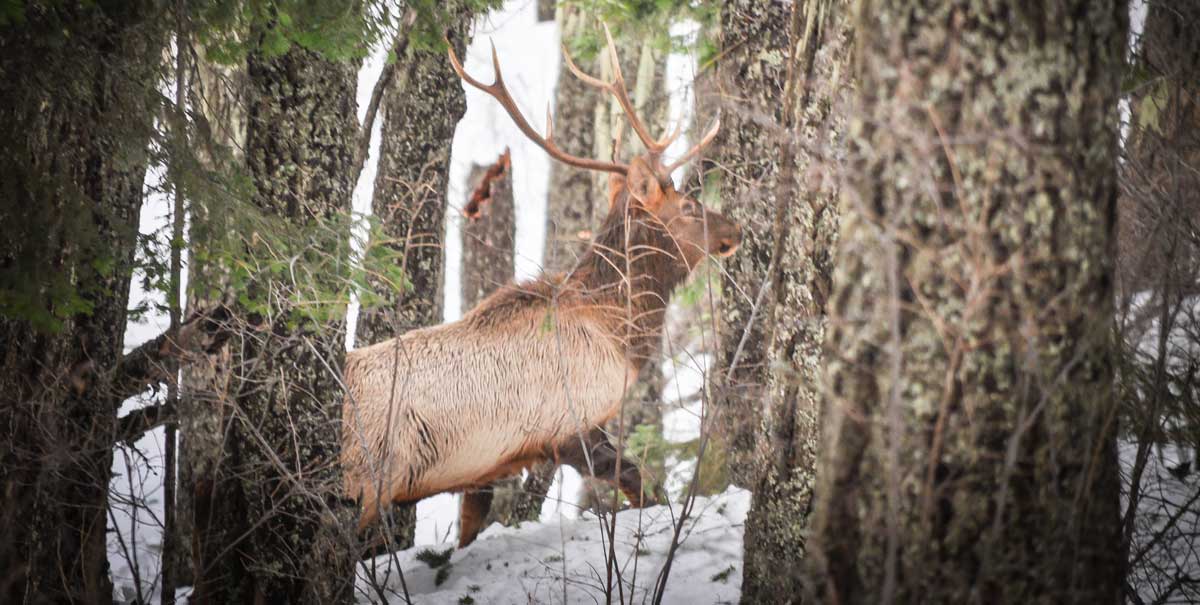Bowhunting elk the whitetail way may sound like a disappointment due to the lack of interaction, activity and simply seeing the country, but oftentimes it’s the best strategy.
Locating a frequently visited waterhole, wallow, food source or the trail in between can lead to ample ambush opportunities. And despite the randomness of elk, they do pattern. The patterns may be more subtle than that of whitetails, but with dedicated scouting patterns emerge.
There are three key locations where a whitetail approach works best: water, food and travel funnels. Find one of these littered with fresh elk sign or revealed by a trail camera, and you may have the clues you need to tag an elk the whitetail way.
Travel corridors
Travel routes and funnels can be the most difficult to pinpoint because you are keying in on an elk’s travel habits. That is always a tough bet due to an elk’s nomadic travel tendencies. Even though elk go from point A to point B with regularity, they don’t always take the same trail like whitetails.
Instead of trying to find the same trail search for terrain features that cause elk to funnel into narrow ambush zones. Sheer cliffs, narrow saddles, downed fences, steep creek drainages and the like all can create narrow routes where elk will naturally pass time and time again while using the path of least resistance. Steep gorges are a great example and offer ample opportunities as elk carve out trails and use them repeatedly.
Forage
As diehard herbivores elk can munch a meal almost anywhere, but like people, they have their preferences. Heavy conifer forests limit sunlight from reaching the ground, thus limiting growth on the forest floor. To get the richest forage, elk need to abandon the safety of the woods and move to parks, meadows and hayfields for a nutrition boost. High mountain parks offer abundant grazing and browsing, and websites like Google Earth can offer great insight on openings that may not be noticeable from ground level or on maps. Scouting will show you if they are being used.
If your elk hunting area is near agriculture check those fields as well. Elk have a fondness for the good stuff and will travel miles to raid alfalfa, wheat or other farm fields.
Water
By far, your whitetail-like ambush will take place near water. Water attracts elk for the obvious activities of drinking and wallowing. They visit water sources varying from mountain lakes to hidden springs and often wallow on the edges at these locations to cool themselves and cover themselves with urine-soaked mud to display their dominance.
To pinpoint a water hotspot look for fresh droppings, tracks and rubs—lots of rubs. Like whitetail scrapes or rubs, elk may wallow one place and never return, but ample sign in the form of numerous rubs and rutted trails distinguishes an infrequent location from an elk night club. Elk may visit water or wallows 24/7, but activity peaks from late morning through dark at these spots.
Get up in the air
Ground blinds, commercial or do-it-yourself, work for ambushes, but I strongly recommend an elevated perch. Field edges and waterholes are generally in open locations so a treestand offers a wide view, helps keep your scent above the elk and definitely keeps your movement hidden above their peripheral vision. Look for lightweight aluminum models and check public-land regulations before you hang a stand. Also scout for a downwind location and keep in mind how thermals affect scent throughout the day.
The whitetail way isn’t the only way for elk, but if you see a pattern emerging in a location, patience may provide the perfect venue to waylay one of nature’s most unpredictable creatures.
